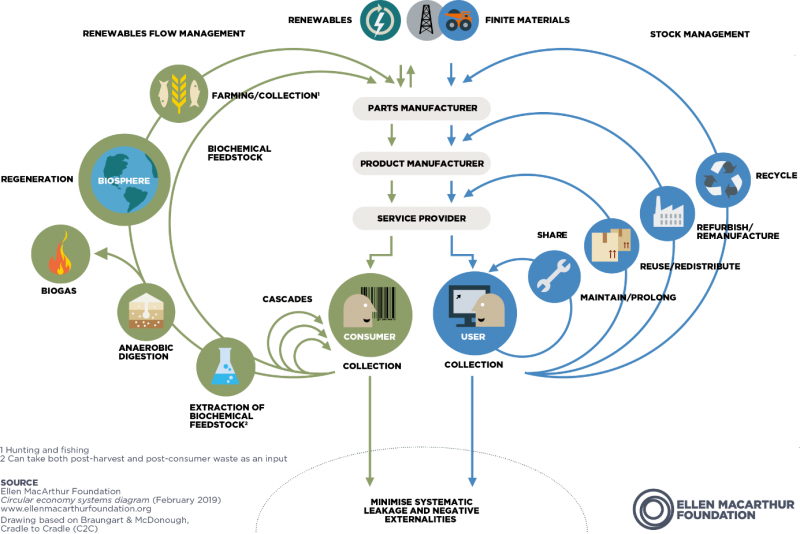Circular Materials and Chemistry – A Cross-Disciplinary Journal (CMC) focuses on Circularity, Circular Chemistry, and Life Cycles of Materials. It aims to investigate how chemistry and materials production can be developed according to ecological, environmental and societal principles.
In just a few years, Circularity has become a prominent way of looking at materials and chemistry.1 It addresses key issues for the design of post-industrial economies and societies, as it involves the invention of less polluting and less energy demanding production processes and materials that are less harmful to the environment and ecosystems, and the incorporation of these materials into circular life cycles.
In this respect, CMC embraces the Ellen MacArthur Foundation’s “Butterfly” diagram vision of circularity, which encompasses the life cycles of bio- and non-bio materials connected with the economy and society.
CMC is based on three fundamental thematic pillars: 1. Materials and Processes, 2. Economy and 3. Society. Indeed, Circular Chemistry is closely linked to economy and industrial transformation, and more generally to the social impact of new materials on people’s lives, behaviours, perceptions and conceptions.
CMC aims to encourage interdisciplinary and multidisciplinary reflection and study between these three pillars.
Therefore, CMC welcomes papers on scientific advances in the field of materials, and the technologies and processes to create them, as well as on economic and social issues related to these materials.
CMC publishes papers that are either specialised in one of the three pillars, or papers that are inter- or multi-disciplinary between two or three of these topics.
Papers submitted to CMC will primarily (but not exclusively) cover the topics listed in the table below. Other topics may also be considered where relevant.
|
1. Materials and Processes |
2. Economy |
3. Society |
|
|
|

